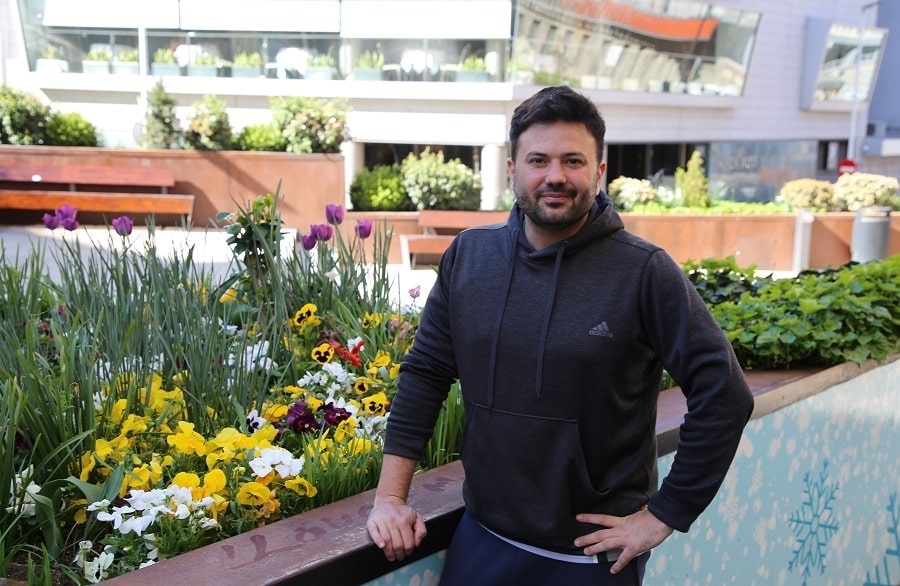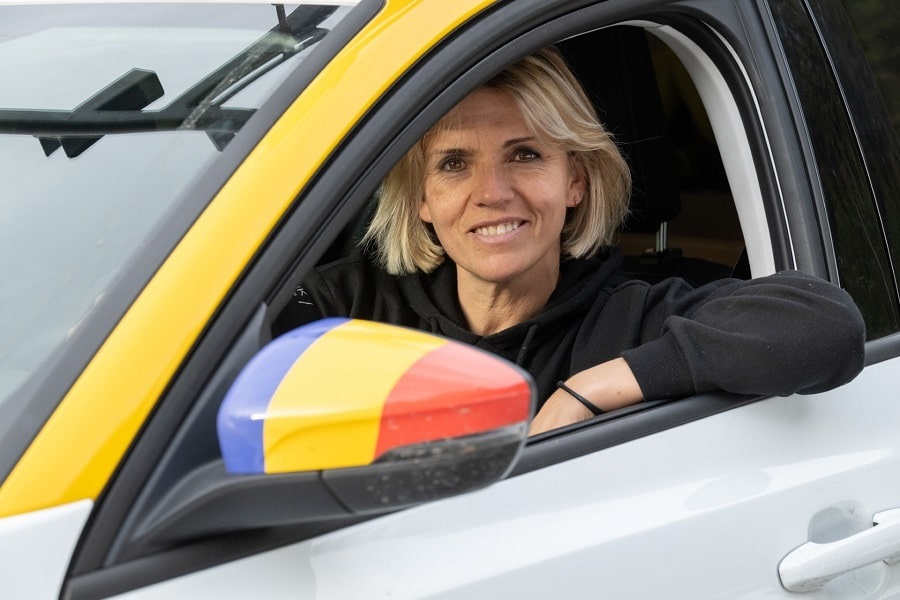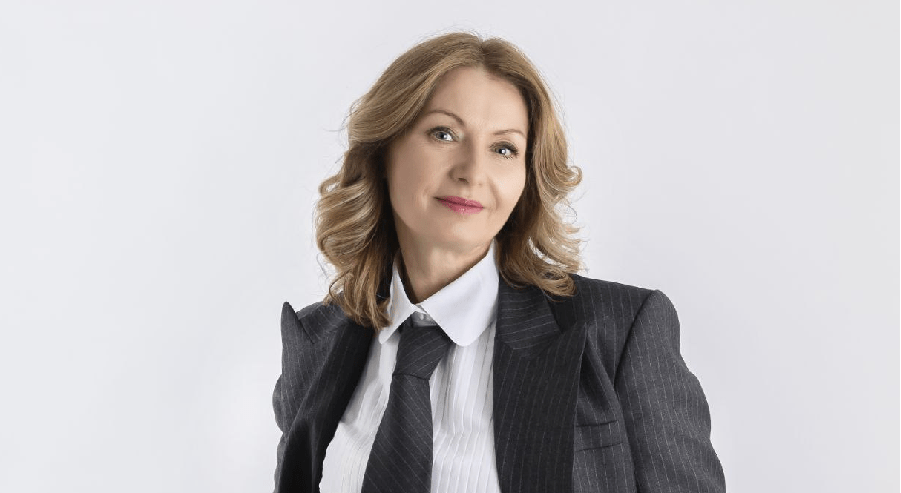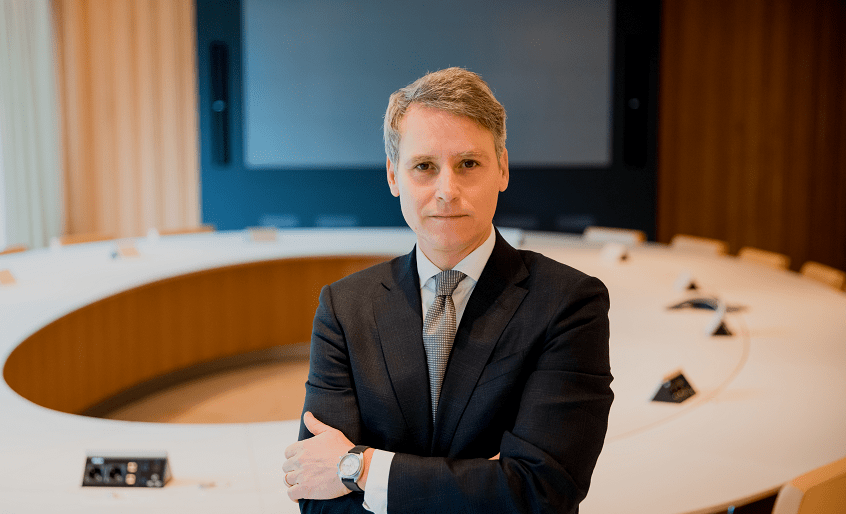Alexey Eryomin, Doctor of Medical Sciences, Kuban Institute of Medicine, professor, Hygiene and Ecology Scientific and Research Institute, scientific director.
Today we are talking with Alexey Eryomin about new technologies for presenting information, informational manipulating and the harmful effects of negative information on the psyche and emotional state of people:
NEW PHENOMENON—INFORMATION PANDEMIC
Info-epidemic—info-pandemic new unhealthy symptoms. Epidemic—a new phenomenon observed at the state level during military propaganda, the Cold War times, information wars, well-known radiophobia and nuclear hysteria precedents. But, with a new information technology level, there is even newer—INFOPANDEMIC. Epidemic—a rapid spread of information, messages among a large number of people in a given population in a short period.
Infopandemic is the dissemination of new information, messages worldwide. Symptoms testifying to this began to appear in 2003 when the world was constantly “attacked” by SARS, avian, and swine influenza. Then, an assessment was made of the information disseminated about the danger, including by WHO, its adequacy for real-comparative virulence and mortality from infection. Therefore, in 2010, PACE hearings were organized with the invitation of WHO experts “The handling of the H1N1 pandemic: more transparency needed?”, at which sounded: “The world has been frightened by a serious of health scares—SARS, Avian ‘Flu and now Swine ‘Flu. We now know, in hindsight, that the fears that were aroused do not appear to be justified. So we want to know how decisions on pandemics are taken—are they taken on the best scientific, epidemiological evidence, or are they influenced by other interests? That is the basis of this complaint. With H1N1, did the WHO, once again, frighten the world without any substantial evidence?”
Information Impact on Health.
The positive value of information for a reasonable person, for his or her education, the search for knowledge, an adequate response, adaptation is extremely important and beyond doubt. But the lack of information, according to the emotions’ origin information theory of academician P.V.Simonov, can lead to the emotional stress development, which can be a risk factor for mental, cardiovascular system diseases (heart attacks, strokes, coronary heart disease), digestive system (peptic ulcer); increased injuries and suicides. According to the WHO, among the 870 million people in Europe, about 100 million experience anxiety and depression, four million suffer from bipolar disorders and four million suffer from panic disorders; depression is the leading disability cause in the world and makes a significant “contribution” to the global disease burden. Currently, with the growth of traditional information-dependent diseases among the population, new pathologies appear—computer syndrome; addictions—pathological dependence on television, on social networks; phobias—nomophobia, fear of being left without communication means; sensory mania, related to the Internet, ludomania—addiction to computer games; depressions formed by social networks; internet-addicted suicides, etc.
Infopandemiс 2020 has led not only to an extremely massive release of fake news regarding aspects of the virus origin, the disinfectants’ effectiveness, personal protective equipment, drugs, situations in the regions, etc. It can be stated that a new mass VIRUSOPHOBIA phenomenon has appeared—the fear of catching viruses. And it does not associate with the previously applied term to computer viruses, but with biological agents. And it can be associated with “maskomania”—the desire to wear a mask as protection means. Previously, the term “mysophobia” was used for individuals—an obsessive fear of pollution or infection, the desire to avoid contact with surrounding objects. A person who experiences a similar fear is called a mysophobic. As you know, Michael Jackson was mysophobic. But at present, this phenomenon has pursued even an infopandemic character. Virusophobia may also be associated with the new QUARANTINOMANIA world phenomenon. Since there is a stage of “acme”—“climax,” I will limit myself to diagnostics and comments, so as not to harm.
Rational comparative assessment of biological hazards. When a person periodically forgets that the world is not anthropocentric and that he is not alone in the biosphere on Earth, the surrounding nature, whose evolution did not stop, reminds him. The danger is known by comparison, although data from different sources may vary:
The plague (Justinian) from 541 to 750 killed ~ 55% of the population; (black death) of 1347-1352 killed 25 million in Europe in five years.
In the 14th century, ~ 75-100 million died from the plague in Europe.
Smallpox killed ~ 60 million in Europe in the 18th century.
Tuberculosis in the 19th century killed ~ a quarter of the European adult population.
Influenza, the first epidemic in Europe (1556-1560), killed ~ 20%.
Spanish flu pandemic (1918-1920) killed ~ 40 million.
From AIDS/HIV total ~ 30 million.
Malaria Death Estimates ~ 500 million.
In comparative evaluations, evidence-based medicine principles should work. According to available data, today in the world dies annually from:
Tuberculosis ~ 1,300,000.
Hepatitis (В and С) ~ 1,286,000.
HIV infection ~ 770,000.
Influenza ~ 250,000 up to 650,000.
Malaria ~ 405,000.
Measles ~ 142,000.
Coronavirus, COVID-19 ~ 41,000 (for 4 months, on 01.04.2020)
Weighted comparison with other risks. Biohazards have always been worse in consequence than wars. And when forming budgets, it is necessary to take into account that more died from diseases than in wars, including world wars, in the absence of an effective “defense preventive medicine”.
Also: atherosclerosis and cardiovascular disease are the cause of mortality No. 1; oncological diseases are No. 2.
At the expense of the dangers of the economic crisis that could be triggered by universal quarantines and the dangers of the pandemic itself, without which, according to the UN, 800 million are starving in the world, ~ 18 thousand children die every day from hunger and malnutrition.
The consequences of quarantine addiction can be even economic. My forecast is favorable regarding quarantine self-isolation: everything will be fine—a person will not switch to the “Matrix” model (in a self-insulating cocoon with power hoses and wires to the brains for communication with a worldwide network). Nature will have its way—a person has arms, legs, muscles, and they need to be occupied, exercised, trained. And yet, there is a “reflex of freedom” discovered by the Nobel Prize Winner I.P.Pavlov.
COVID-19 REQUIRES INFORMATION HYGIENE
At the mass media level. When I designated the research trend “informational ecology” and “informational hygiene” more than 20 years ago, it never occurred to me how much civilization could change in this direction. Then, while at a conference at the UN Department of Public Information, we discussed, among other things, whether a “code of ethical conduct for journalists” is needed with all the freedom of speech. Because even then it became clear that the mass media in the struggle for the audience, saturate the news with terrifying details that attract attention but affect health. Then I designated: information hygiene is a medical science branch that studies the laws of the information influence on the mental, physical and social well-being of a person, his or her working capacity, life expectancy, society public health, developing standards and measures to improve the information environment and optimize intellectual activity.
It can be seen that the time has come to practical implementation and the BBC, in connection with fakes about the coronavirus on the Internet, published “7 rules of information hygiene” on 03/27/2020.
Individually, as well as personal hygiene. Self-control if you are a super-spreader journalist or an influential person. The mindset formation for the knowledge search is necessary for self-education. In self-esteem, self-awareness, personal strategies of information consumption and analysis, it is advisable to adhere to an optimistic and constructive attitude with the “think of nice people, do good deeds,” “knowing the facts, you need to interpret them with good intent,” “think globally, act locally” and other slogans. Trust, but always verify today. If you are transmitting something, then indicate the source. If you find out, read, then think critically: check the source and ask for the source if it is missing. Thus, science—knowledge systems, come into use. Collect information from different sources before making decisions; this is important when planning trips, organizing events. Predicting is intellectual quality.
For personal use. There is information from the Open Data Institute that the U.S. Centers for Disease Control and Prevention removed the numbers from its toolbar; in the UK, it was announced that they would publish data every week only. In Singapore, a lot of details have been published about each infected person, including his or her age, gender, place of work, where they went and how they interacted with other infected people. In South Korea, they sent text alerts containing similar information. This can help others be mindful of their symptoms if they visit the same places. But it is reported that this also leads to a decrease in the clients’ number for small businesses only because they were once visited by someone with a coronavirus, and the public shame of people who are believed to have been caught in business or engaged in illegal activities. Leaving aside ethical issues related to the violation of people’s right to privacy, information distribution and use, specific cases have negative side effects. When disclosure can harm people or things that they care about, people are more likely to lie. If people who contract COVID-19 distribute false information about their movements and contacts, then officials will be less likely to track and control new cases. This, in turn, will increase the disease spread. The data infrastructure that is created to support people during the COVID-19 outbreak can last a long time. Individuals must be convinced that it is open, trustworthy, and built responsibly.
At the state-level. Last year, the President of the United States repeatedly reproached the mass media for their fake news, and the President of Russia on the 18th of March, 2019 signed laws to combat false information and counteract the information distribution, prohibiting the publication of false public information that is presented as real if it threatens life and health, affects public order and safety, interferes with the operation of life support facilities, infrastructure, finances, etc. The legislation is even tougher in several countries, including Turkey, China.
Meanwhile, in the Ministries of Education, Sciences, Health of all countries there is no textbook on information hygiene, the preparation of which could be based on the previously developed information ecology axiomatics. And this could contribute to information ethics among citizens. In Russia, senior officials have repeatedly spoken about this: in 2018—the Minister of Education of the Russian Federation indicated that we will pay special attention to “cyber hygiene” in the “education” national project framework; The Special Representative of the President of the Russian Federation for Digital and Technological Development announced the need for teaching “digital hygiene,” “internet hygiene” in schools; in 2019, the Chairman of the Council of the Federation of the Federal Assembly of the Russian Federation raised several times the issue of the gadgets’ problems in schools. But the situation with a science-based system development is according to “things are right where they started”.
The need to implement methods and information hygiene practices for the prevention of infoepidemic, panic, and mass psychoses has become apparent in the context of the SARS-CoV-2 coronavirus pandemic. “Information hygiene is necessary,” the President of Ukraine addressed the nation on the 13th of March, 2020.
At the global community level. In modern civilization, when humanity is approaching the formation of an autonomous intellectual system, with the requirements of a unified response to the challenges of our time, the goals of existing Constitutions may look outdated. Compare, for example, the first paragraph of the US Constitution, which sets out the goal: “We are the People of the United States, in Order to form a more perfect Union, … provide for the common defence, … do ordain and establish this Constitution…”,—with the goal of the state society of Venezuela, the Constitution of which outlines the desire to take its rightful place among developed countries. In this regard, deserve attention the words of Academician Sakharov (one of the hydrogen bomb inventors, and subsequently a well-known human rights activist), who, at the end of the twentieth century, in the context of the originally planned not destruction, but reforming the Soviet Union, wrote the Constitution draft: “European-Asian Union relies in its development on the moral and cultural traditions of Europe and Asia and all of humanity, all races, and peoples … The goal of the Union of Europe and Asia Republics people is a happy, meaningful life, material, and spiritual freedom, prosperity, peace and security for the country citizens, for all people on Earth, regardless of their race, nationality … The Union seeks to preserve the habitat, to preserve the external and internal conditions for human existence and life on Earth as a whole… The global survival goals of humanity take precedence over any regional, state, national, class, party, group and personal goals.”
Perhaps one of the UN fateful decisions could be the adoption by the Security Council or the UN General Assembly of recommendations on the “Constitutions goals unification” of member states by the need of a single human population as an autonomous system.
But it seems that this is not for the near future. Meanwhile: “Now is not the time to panic and stigmatize,” the UN Secretary-General urged on the 14th of March, 2020, in his address to nations and peoples about the pandemic.
NEW MANIFESTATIONS OF HUMANITY INTELLIGENCE
Previous actions of humanity as an autonomous system. There is no doubt that humanity is evolving intellectually and its intellectual potential is growing. The joint global highly intelligent activity of people in the second half of the twentieth century led to acts reflecting the unity of humanity, which in some cases reacts as an autonomous system. Examples of such unity are the founding of the UN and its specialized agencies, the victory over smallpox by vaccination, the atomic energy peaceful use, access into space, nuclear and bacteriological testing bans, and the satellite television arrangement. Already in the twenty-first century—responding to global warming, hydrocarbon production, contractual balancing, overcoming economic crises, mega-projects for joint space observations, nanoworld study and nuclear research, the ambitions for the study of the brain and the creation of universal artificial intelligence indicated in national strategies.
Noogenesis. In 2003-2005, an analogy was drawn between the systemic nature of the brain cell population and the human population, and the concept was proposed: noogenesis (gr. Noo—mind) is an evolutionary morphofunctional process of spatial development and temporal progress of intelligent systems (intellectual evolution); appearance and evolution of the mind. The term was mentioned for the first time in 1955 by the anthropologist and philosopher Pierre Teilhard de Chardin, but then there was not given any precisely and unambiguously named concept in which there were no specific meanings.
Modern characteristics of the global intellectual system. It is interesting to trace how rapidly the human global common communications network has developed. In 1876, Bell patented a telephone, and Zvorykin patented a television in 1923. By 2018, 7.7 billion people account for 6 billion televisors, 6 billion telephones, 2 billion computers, 4 billion Internet users, 3.2 billion are registered in social networks. By the beginning of the century, humanity began to produce 18 * 1018 bytes (18 Exabytes) of information per year, but the information amount in the world increased annually by 30% and reached 2.5 * 1018 bytes per day. All this can explain the extremely fast dissemination speed of large information amounts. The question remains: will it always contribute to the rapid adoption of effective and adequate solutions to the challenges of our time, or, in some cases, global panic and hysteria, total protective inhibition and depression, global psychosis?
New features of the response to COVID-19. Does humanity continue to learn to respond as a single system to new challenges? The following can be attributed to the new details of the general picture of a new response level of the human population to the emerging biological hazard. Extremely fast information distribution among masses of people, not specialists. This was not the case with previous analogs—declared by WHO as emergencies: Zika fever (2015-2016), Ebola virus disease (2014-2016), yellow fever (2016). Posting on several resources, including the World Health Organization (WHO), online resources with a daily updated map of the registered infections and deaths number. The “domino effect” in the appeals of leaders of states and international public officials (UN, WHO, EU) to nations, and then governors (in Russia), city mayors (in Italy), etc. As a result, unprecedented measures to implement quarantine measures, the use of personal protective equipment, the allocation of funding for the new medical structures’ arrangement, equipment acquisition, and scientific research.
In general—we are for a rational response! And you—for the fashion for intelligence?











